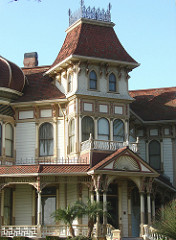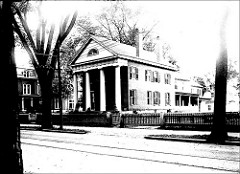AP Human Geography Chapter 6: Culture and Cultural Landscapes Vocabulary – Flashcards
Unlock all answers in this set
Unlock answersquestion
artifact
answer
any physical object that a culture produces
question
barriers to diffusion
answer
things that slow or stop the spread of an idea, innovation, people, or other things
question
contagious diffusion
answer
the transmission of a phenomenon through close contact with nearby places, such as with many diseases
question
cultural convergence
answer
the process by which two cultures become similar
question
cultural diffusion
answer
the movement of culture traits from one place to another
question
cultural landscape
answer
the cultural impacts on an area, including buildings, agricultural patterns, roads, signs, and nearly everything else that humans have created
question
culture
answer
shared patterns of learned behavior, attitudes, and knowledge
question
culture complex
answer
a group of interrelated culture traits
question
culture hearth
answer
an area from which important culture traits, including ideas, technology, and social structures, originated. Ancient Mesopotamia is an example
question
culture realm
answer
groupings of culture regions based on broad culture similarities. Western Europe is an example
question
culture region
answer
an area defined by a large number of common culture traits Example: New England, Midwest
question
culture trait
answer
a single component of a culture; can be a thing, an idea, or a social convention Examples: Language, Music, Clothing, Food, and History.
question
diffusion
answer
the movement of a phenomenon from one location to another
question
folk culture
answer
culture traits that are traditional, no longer widely practiced by a large number of people, and generally isolated in small, often rural areas
question
foodways
answer
how a culture prepares and consumes food
question
hearth
answer
the place where something begins
question
hierarchical diffusion
answer
a pattern where things move from one place to other places that have some similarities or are otherwise going to be more receptive, such as from a large city to smaller cities or from a boss to a subordinate
question
ideological subsystem
answer
the ideas, beliefs, values, and knowledge of a culture
question
innovation diffusion
answer
the movement of a phenomenon from one location to another
question
mentifacts
answer
individual culture traits of the ideological subsystem, such as an idea
question
popular culture
answer
the aspects of a culture that are widespread, fast-changing, and transmitted by the mass media
question
relocation diffusion
answer
the diffusion of a particular phenomenon over a far distance as a result of migration
question
reverse hierarchical diffusion
answer
diffusion up a hierarchy, such as from a small town to large cities
question
social construction of space
answer
the idea that society shapes the spatial nature of our world
question
sociofact
answer
a culture trait in the sociological subsystem
question
sociological subsystem
answer
the part of a culture that guides how people are expected to interact with each other and how their social institutions are structured
question
technological subsystem
answer
the material objects that a culture produces, as well as the procedures for using those objects
question
environmental determinism
answer
The controversial idea, popular in the early 20th century and largely discredited today, that climate or other physical qualities of an area dictate the culture of the people who live there.
question
Wrigley Field
answer
Home of the Chicago Cubs; built 1914, "Wrigleyville"; Clark, Addison, and Sheffield Streets. (Northside)
question
United Center
answer
Home of the Chicago Blackhawks and Bulls; built 1994; "Madhouse on Madison".
question
Soldier Field
answer
Home of the Chicago Bears; built 1924; Lake Shore Drive and Chicago Lakefront.
question
U.S. Cellular Field
answer
Home of the Chicago White Sox; built 1991; 35th and Shields. (Southside)
question
Victorian Home

answer
Period: late 19th Century (1870s-1890s) Name: Victorian Description: Crazy rooflines, odd-shaped windows, wrap-around porches, ornamental designs on outside walls. Can be seen in Crown Point. Rarely built today and the majority have been turned into bread and breakfasts
question
Second Empire Homes
answer
Period: 1855-1875 Name: Second Empire Description: Based on trendy styles in Europe at the time; feature the unique mansard roof
question
Gothic Revival/Italianate Homes
answer
Period: Mid-19th Century (1840s-70s) Name: Gothic/Italianate Description: Gingerbread houses Italianate: Low roofs, wide eaves, and ornamental brackets, Victorian Italianate houses suggest an Italian Renaissance villa
question
Greek Revival Homes

answer
Period: Early 19th Century Name: Greek and Roman Description: Have columns and other touches that make them look like ancient temples
question
Georgian Style Homes
answer
Period: Colonial period Name: Early American Description: Generally rectangular and the homes gables are on the side of the house. The roof line runs from the sides of the home to the other side.
question
Prairie Style Home
answer
Period: Early 20th century (1920s) Description: Frank Lloyd Wright; low-pitched roof, overhanging eaves, horizontal lines, central chimney, clerestory windows



